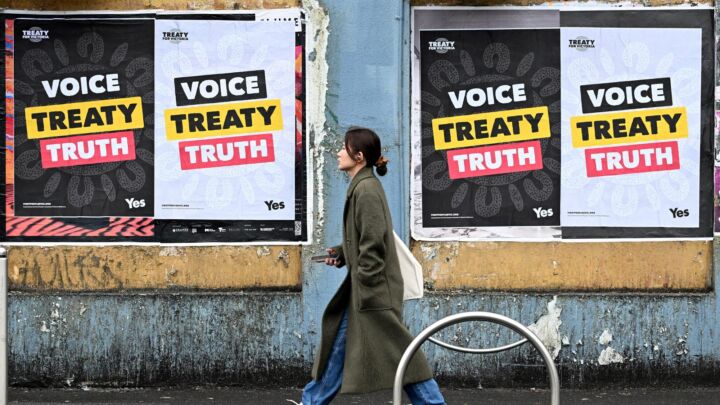Suffering for his art
London-based artist Sebastian Horsley explains why he got crucified in the Philippines.

‘Crucifixion’, The Crucifix Lane Project , Crucifix Lane, London, to 18 July 2002.
In summer 2000, Sebastian Horsley from London became the first Western artist to be crucified in the Philippines.
Horsley took part in an annual crucifixion carried out by fundamentalist Catholics on the island of Luzon in the Philippines, as a way of inspiring a series of paintings. Phoney crucifixions have been taking place in parts of the Philippines since 1961. After talking to ambassadors, tourist officials and local village chiefs, Horsley persuaded the villagers to let him be crucified, for artistic reasons.
The resulting work – plus a film directed by young British artist Sarah Lucas and still photos of the event by Dennis Morris – are on exhibition at a new gallery in south-east London’s Crucifix Lane.
Typically for our times, Horsley justifies this latest work by claiming to be a damaged loser, a former addict and a sexual masochist. This may all be true, but Horsley strikes me as different to the other recovering alcoholics and cancer patients who seem to make up London’s avant-garde – different because, while many artists tend to focus narrowly on themselves, Horsley wants to strive towards something greater than himself.
In his ‘Crucifixion’ show, Horsley creates a portrait of humanity, not as victim but as muscular victim, as an heroic figure who tries and fails rather than not trying at all. So why did he choose the motif of the crucifixion? Does he identify with Christ as a victim? No, says Horsley: ‘Christ is one of many symbols of heroism.’
‘He’s the one who gambles with his life and successfully defies death, and men follow him and eventually worship his memory’, Horsley told me last year. ‘He embodies the triumph over what they fear most, extinction and death. One of the reasons for me that the symbol of Christ won out over all other immortality symbols is the Easter cry “Christ has risen”. Christ has survived death. That’s why the symbol of Christ is such a strong one.’
Horsley’s ‘Crucifixion’ series is not meant to be a pastiche of Christ’s crucifixion, the Easter Passion, and the Stations of the Cross. It is not concerned with blaspheming the relics of Christianity, but with transcending the humble and celebrating the heroic in modern humanity. Horsley wants to use the traditional image of the crucifixion to illuminate the present in a different way:
‘It’s a grand theme. I love the idea of inventing a new tradition. I love the idea of taking something that has been done beautifully before and trying to give it a modern twist. As an aesthetic thing, or as a formal thing, it gives you the chance to study one figure in isolation. The minute you have more than one person, you have a story, and when you have a story, the boredom sets in.’
In order to move artistically beyond boredom, Horsley gave up his dilettante Soho lifestyle and went to the Philippines. There he encountered Catholic fundamentalists who stage semi-real/semi-phoney crucifixions. If little else, Horsley’s self-inflicted crucifixion puts the kybosh on art philistines who, whenever they are confronted by a work of modern art, claim ‘I could do that’. But he is far more ambitious than merely wanting to confront a banal prejudice. Horsley is out to capture the authentic human essence – and ironically, for him that involved negating his own personality and lifestyle.
‘In order to save Sebastian it had become necessary to destroy him’, Horsley told me. ‘I was seven months off drugs when I got crucified. I had been struggling with crack and heroin addiction through a long period of my life. A man sometimes shows in his self-destruction that he is worthy of self-creation. It was a way of symbolically destroying myself in order to be reborn.’
At times, Horsley makes getting crucified in the Philippines sound like a therapy session. But there has never been any progress in art without the annihilation of the existing aesthetic. Unlike political nihilism, cultural nihilism can be beneficial for the development of civilisation.
To show that his crucifixion was more than a cheap media stunt, Horsley draws on the Romantic tradition in Western art. ‘For me, an artist has to go to every extreme. How can we justify our own heroism? We would have to be as gods, and what right do we have to play God? Well, as a creator and as an artist I am a creature overwhelmed by the creative process itself. My work accuses me, makes me feel inferior. No wonder that art and psychosis have historically had such an intimate relationship. The road to creativity passes so close to the madhouse, and often detours or ends there.’
‘The real test of an art form is whether it will test itself to destruction’, says Horsley. ‘Only by going too far [do] you stand to gain anything at all. By not risking anything, you potentially risk everything.’
Horsley’s work also threw up questions about the nature of reality. ‘It’s only in extreme situations that reality reveals itself’, he says. ‘At another level, I wanted to change the nature of reality. I wanted to hack off the ball and chain of personality. We can do that in many different ways: through drugs, through pain, through love. I wanted to be taken to a place which my mind or my rationality wouldn’t take me. As an artist, it was standing on the edge of an unknown sea. Yes it was dangerous, but anything valuable is dangerous.’
Like a Gothic hero, Horsley aims to be mad, bad and dangerous to know. Perhaps unsurprisingly, the pleasure of pain plays a key role in his art: ‘I did it to find out about the validity of pain, the gift of pain, to achieve a higher level of consciousness, to change my relationship to myself and I succeeded in doing that. It has given me an inner confidence. I didn’t die, or scream or shit myself, but I felt I had died.’
‘Getting crucified is an attempt to push my personality off the rails’, says Horsley. ‘The idea of pain is very important for me. Pain is a necessary stage on the road to anything valuable. For if we do not suffer, how should we know that we live? Not everything that makes us feel better is good for us, and not everything which hurts may be bad. This is our courage, where we are able to turn disaster into art. We must weep, then reap.
‘Turner, when he wanted to paint the sky and the storms, lashed himself to the front of a boat. I took a very similar view. It seems obvious to me, if you are going to try to paint a crucifixion, you have to be nailed up. I’m surprised that no one’s thought of it before.’
Horsley points that, whatever propels the creation of a work of art, the piece still has to work when removed from the context in which it was created: ‘It’s all very well to be crucified, and then to do the paintings. But the paintings have to stand alone. You’ve got to put a painting on the wall and someone can say it’s a good painting without knowing that I had to be crucified to do it.’
Horsley admits that, after the spectacular excitement of the crucifixion film made by Lucas, the paintings are something of an anti-climax. However, as I see it, it’s a bonus to know how the paintings came to be produced. The 10 paintings remind me most of Mark Rothko’s giant colour field splurges. One painting – ‘Crucifixion No 5’ – has distinct echoes of Salvador Dali’s ‘Christ of St John of the Cross’ (1951). Two others are tortured figures reminiscent of the ‘plague’ Christs found at crossroads in medieval Germany.
‘Perhaps the best way to explain my way of working is as method painting’, says Horsley. ‘I want to relate the actuality, the reality of the contemporary performance piece to classical traditions. Properly and seriously shown, this work is an important consideration of ways in which one of art’s most established subjects can still find a fresh treatment and contemporary relevance. I’d like to think that it contributes significantly to the debate about the role of contemporary performance and the idea of artist’s personality. I don’t want to paint things the way they are – I want to paint them the way I feel and sense they are. And I can’t feel and sense how they are until I go through the experience I’m painting.’
So what conclusions has Horsley drawn from his excruciating trip? ‘Of course it was a folly. It was a grand folly’, he says. ‘It had an energy to its excess. The whole point about human beings is that, our existence is so meaningless, we might as well make a grandeur out of it. We are what we pretend to be.’
However, Horsley also knows that such artistic pretence needs to relate to harsh reality if ‘what we pretend to be’ is to continue to retain our attention. In his opinion, this is because humanity is ‘part divine’ and ‘part shit’: ‘We’re Gods with arseholes. A diamond in the turd. We’ve got these minds that can speculate about infinity, eternity, gods, and it’s housed in a body and a heart pumping shitty stuff worth about two cents.’
Horsley sees humanity forever oscillating between matters material and spiritual. As one of those oscillations, he himself displays many of the pretensions of today’s victim culture. Yet he has reacted stridently against them, too. If victimisation’s grip over artists like Horsley is moot, maybe its ability to regiment society evermore is defective as well. Thank Christ for that.
Aidan Campbell is the author of Western Primitivism, African Ethicity: A Study in Cultural Relations, Continuum International Publishing Group, 1997 (buy this book from Amazon (UK) or Amazon (USA)); and a contributor to Art: What Is It Good For?, Hodder Murray, 2002 (buy this book from Amazon (UK) or Amazon (USA))
To enquire about republishing spiked’s content, a right to reply or to request a correction, please contact the managing editor, Viv Regan.








Comments
Want to join the conversation?
Only spiked supporters and patrons, who donate regularly to us, can comment on our articles.